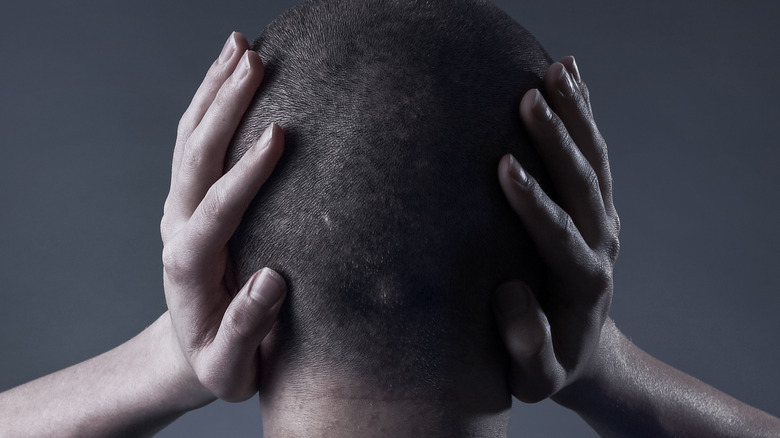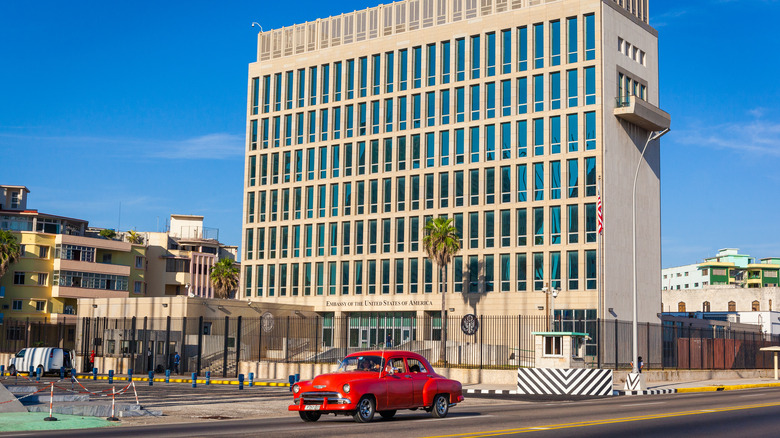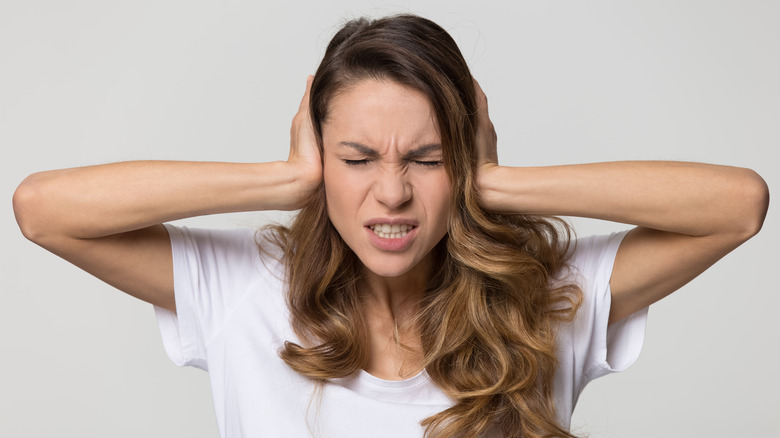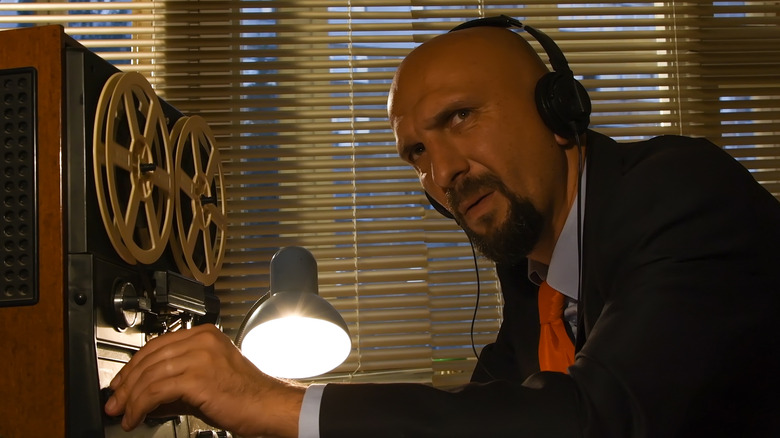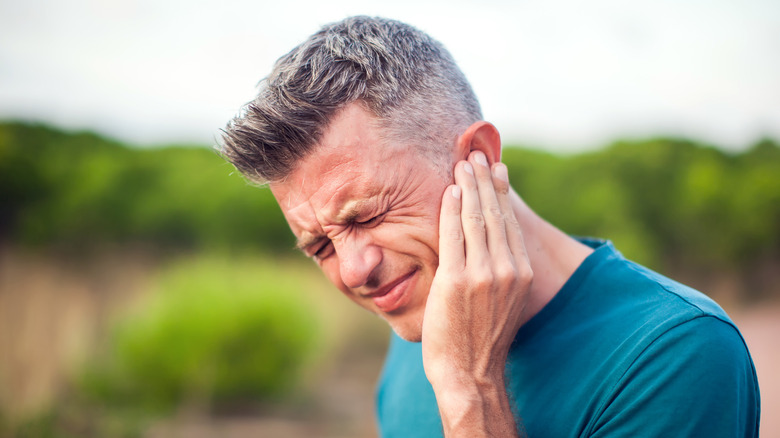Do We Now Know The Cause For Havana Syndrome?
In 2016, diplomats working in the United States Embassy in Havana, Cuba started suffering from unexplained symptoms that not only left them in immense discomfort but also seem to leave behind lasting injuries, per the New York Post. Those affected — including some CIA officers working under diplomatic cover in Cuba, per The New Yorker — described a feeling of immense pressure in their heads. Some also heard a loud sound that persisted wherever they moved indoors, similar to that made by cicadas.
These experiences and the symptoms that followed became known as Havana syndrome and have been experienced by personnel, not just in Havana, but around the world as well. The initial concern was that American personnel were victims of some kind of sonic weapon. The cause of these incidents remains unknown, while new possible explanations have emerged, including microwave attacks and that the symptoms were caused by especially loud crickets (via Insider).
The first instance of Havana syndrome and initial concerns
According to The New Yorker, a CIA officer visited the U.S. Embassy's health office on December 30, 2016. The individual became the first person to describe the trademark symptoms of what later became known as Havana syndrome. The officer had experienced the symptoms while in their own home and described unusual sounds and sensations of pressure. The initial noises and pressure were soon followed by headaches and dizzy spells.
This officer was an experienced spy working under diplomatic cover and had been under surveillance by Cuban intelligence officials since arriving at the Embassy. The Cubans knew where most of these officers and other diplomats lived, including Vicki Hiddleston, who worked there for the State Department from 1999 to 2002. In her 2018 memoir "Our Woman in Havana: A Diplomat's Chronicle of America's Long Struggle with Castro's Cuba," she described how where she lived was surrounded by three conspicuously empty mansions. "One was used as a set for a local soap opera broadcast on Cuban television," she said. "The other two were strategically located, with video and listening devices pointed at my residence."
The same officer had another bout with the mysterious phenomenon, and a few months later so did two other CIA officers. This prompted growing concern that American intelligence officers were being targeted.
The characteristics of the incidents
As more cases of the mysterious noises and pressure sensations emerged, some unusual characteristics seemed to link many of the cases. According to Neurology Today, the attacks started in late 2016; 24 personnel reported symptoms through August 2017. In each case, "audible or sensory phenomena" were reported that seemed to come from one specific direction. These episodes lasted anywhere from 20 seconds to 30 minutes, and some described it as a similar sensation to the buffetting that occurs while driving with an open car window. Most of the time, those affected were either in a hotel or their own homes. Strangely, no one else in the household or the hotel reported any of these sensations.
After the initial incident, additional symptoms developed in the weeks that followed, including reports of trouble with balance and sleep, sensory problems including impaired vision and hearing, and issues with cognition and headaches.
According to The New Yorker, given the prevalence of symptoms like ringing in the ears and dizziness, doctors guessed that whatever the people had experienced had resulted in inner-ear damage, The doctors working at the embassy were not equipped to properly treat this kind of injury, so patients had to be sent back to the United States to be treated by specialists.
The investigation begins
According to The New Yorker, the United States immediately suspected that the Cubans were behind these incidents and that the phenomena were the byproduct of some kind of sonic weapon or surveillance device. However, Cuban officials all the way up to Fidel Castro himself denied their involvement and even offered to work with the United States in solving the mystery. This meant that suspicions turned to the Russians.
In 2018, then-Secretary of State Rex Tillerson referred to the incidents as "deliberate attacks" and defended bringing diplomats back to the United States to keep them safe (via Associated Press). However, around the same time, the FBI was investigating the reports and started to believe that they were not sonic attacks. The investigation yielded a report that was completed in 2018 but remained classified for a time. In 2021, Buzzfeed News acquired a copy of the report which had since been declassified, and it revealed a surprising possible explanation for the issues experienced by American personnel. It involved neither sonic weapons nor microwaves. Maybe crickets.
Could crickets have been the cause?
The 2018 declassified report obtained by Buzzfeed News wasn't saying that crickets had been determined to be the cause of so-called Havana Syndrome, but instead, it offered that as a possible explanation. The report was written by JASON, an advisory group that has been reviewing national security issues for the United States since the start of the Cold War. The report stated that eight of the original 21 incidents were likely caused by insects, rather than other explanations like microwaves and ultrasound beams, as some have surmised.
"No plausible single source of energy (neither radio/microwaves nor sonic) can produce both the recorded audio/video signals and the reported medical effects," the report reads. "We believe the recorded sounds are mechanical or biological in origin, rather than electronic. The most likely source is the Indies short-tailed cricket."
According to Rolling Stone, the spectral properties of sounds that were recorded and thought to have been the cause of symptoms were similar to those of noises produced by the Indies short-tailed cricket. "The call of this Caribbean species is about 7 kHz, and is delivered at an unusually high rate, which gives humans the sensation of a continuous sharp trill," Montealegre-Zapata, a biology professor at the University of Lincoln, wrote in a 2019 report (via Cold Spring Harbor Laboratory).
More recent developments
The cause of the symptoms experienced by embassy workers in Havana has never been conclusively identified. Perhaps deepening the mystery is that Cuba is not the only place where this type of thing has been reported. In 2021, The New York Times reported that as many as 130 people have been affected by Havana syndrome or something similar all around the world. This included instances in China, as well as some in other parts of Asia and Europe. The same year, there were reports of people suffering from Havana syndrome coming out of the U.S. Embassy in Colombia (via BBC News).
In 2022, United States President Joe Biden's administration announced plans to offer compensation to those affected by Havana syndrome. According to CNN, these compensatory payments will be for those who needed a year or more of treatment after experiencing symptoms; the payments will be between $140,000 and $187,000.
